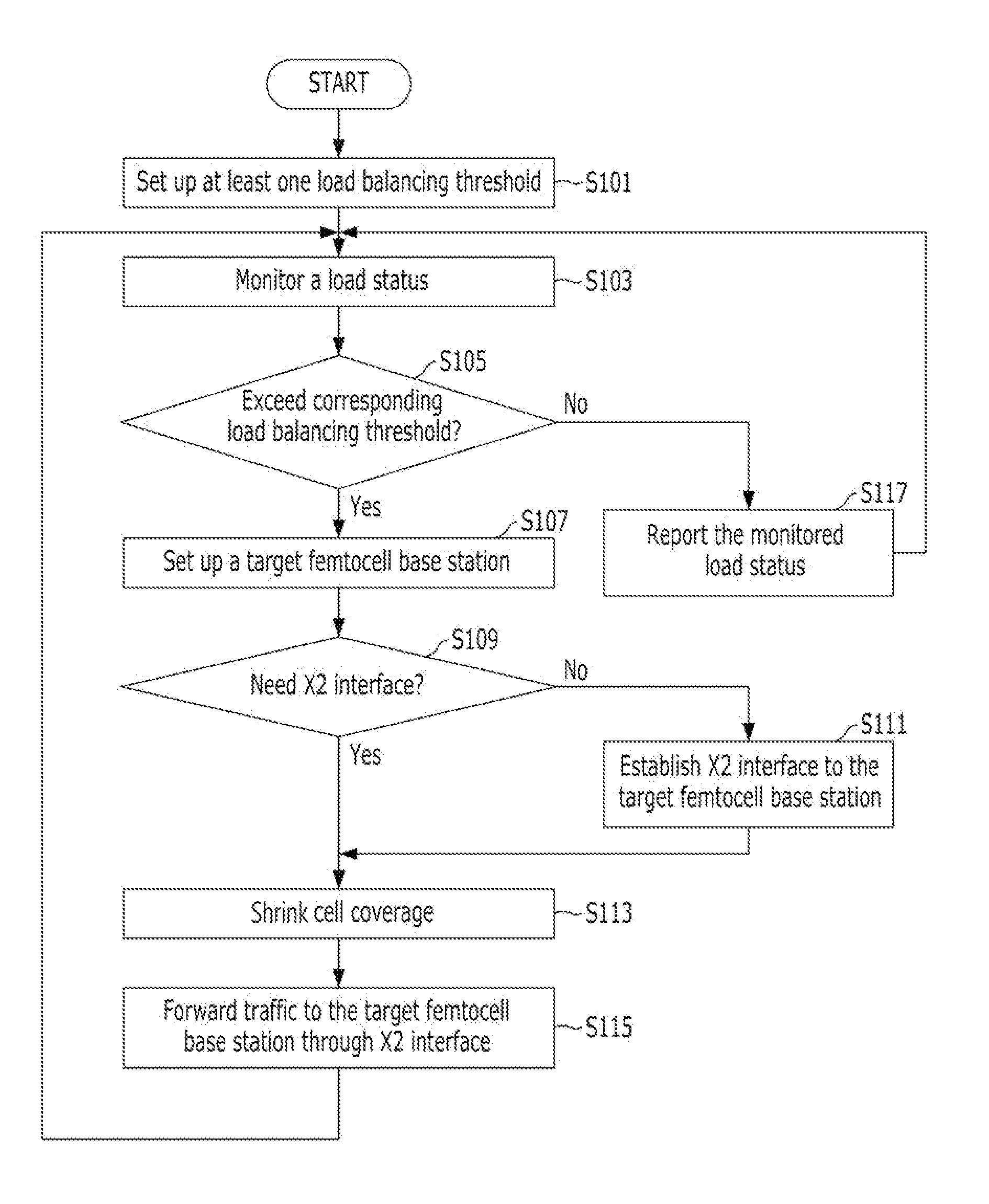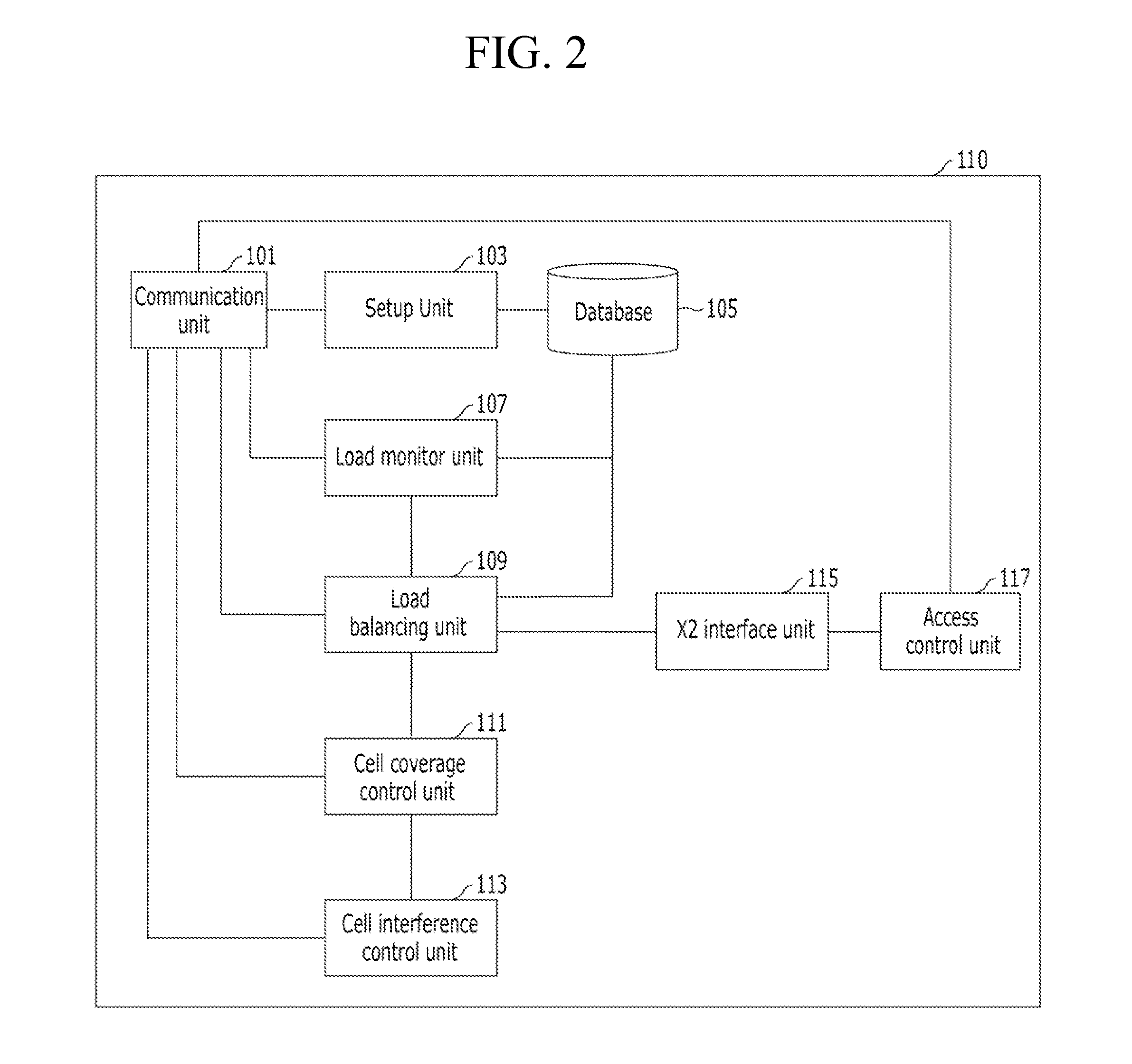Load balancing in femtocells
a femtocell and load balancing technology, applied in the field of communication, can solve the problems of not defining an x2 interface for femtocell base stations in the 3gpp lte standard specification, and the load balancing policy of typical femtocell base stations is not necessarily efficient, so as to reduce transmission power, shrink the expansion cell coverage, and reduce transmission power
- Summary
- Abstract
- Description
- Claims
- Application Information
AI Technical Summary
Benefits of technology
Problems solved by technology
Method used
Image
Examples
Embodiment Construction
[0041]Reference will now be made in detail to embodiments of the present invention, examples of which are illustrated in the accompanying drawings, wherein like reference numerals refer to like elements throughout. The embodiments are described below, in order to explain the present invention by referring to the figures.
[0042]Embodiments of the present invention will be described as being applied to a long term evolution (LTE) network. The present invention, however, is not limited thereto. Embodiments of the present invention might be similarly applied to other communication networks such as, for example, global system for mobile communication (GSM), code division multiple access 2000 (CDMA-2000), time division synchronous code division multiple access (TD-SCDMA), worldwide interoperability for microwave access (WiMAX), and wireless broadband (WiBro). Hereinafter, load balancing in femtocells using an X2 interface in accordance with an embodiment of the present invention will be de...
PUM
 Login to View More
Login to View More Abstract
Description
Claims
Application Information
 Login to View More
Login to View More - R&D
- Intellectual Property
- Life Sciences
- Materials
- Tech Scout
- Unparalleled Data Quality
- Higher Quality Content
- 60% Fewer Hallucinations
Browse by: Latest US Patents, China's latest patents, Technical Efficacy Thesaurus, Application Domain, Technology Topic, Popular Technical Reports.
© 2025 PatSnap. All rights reserved.Legal|Privacy policy|Modern Slavery Act Transparency Statement|Sitemap|About US| Contact US: help@patsnap.com



